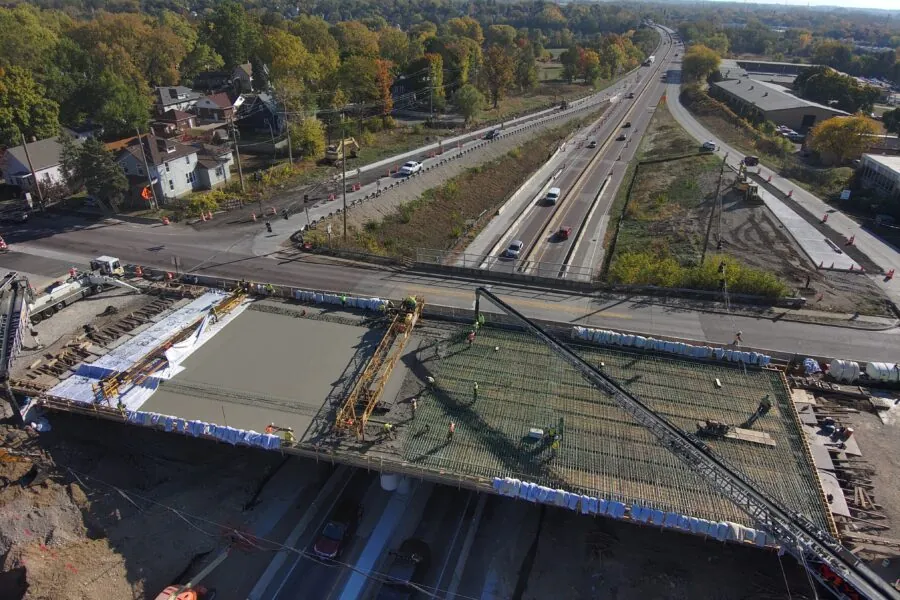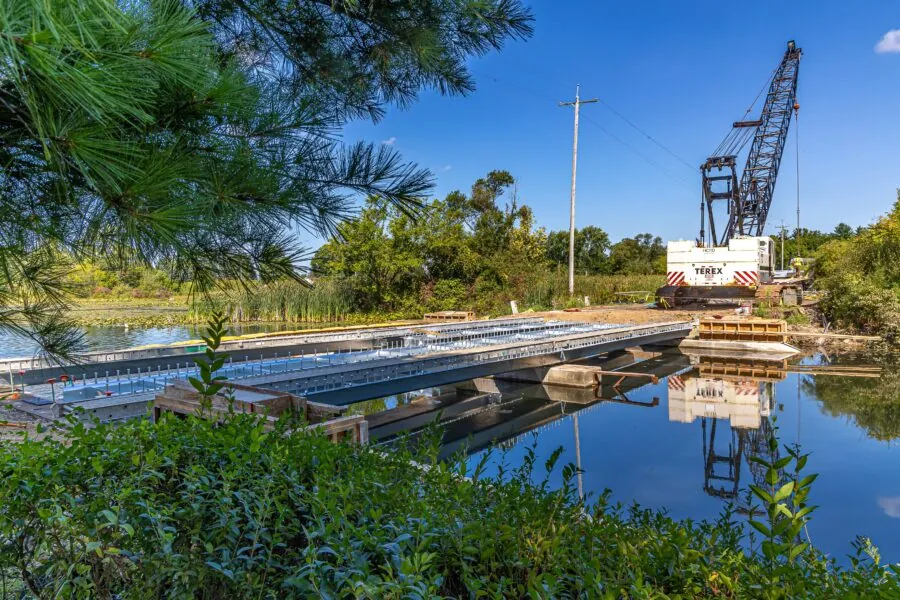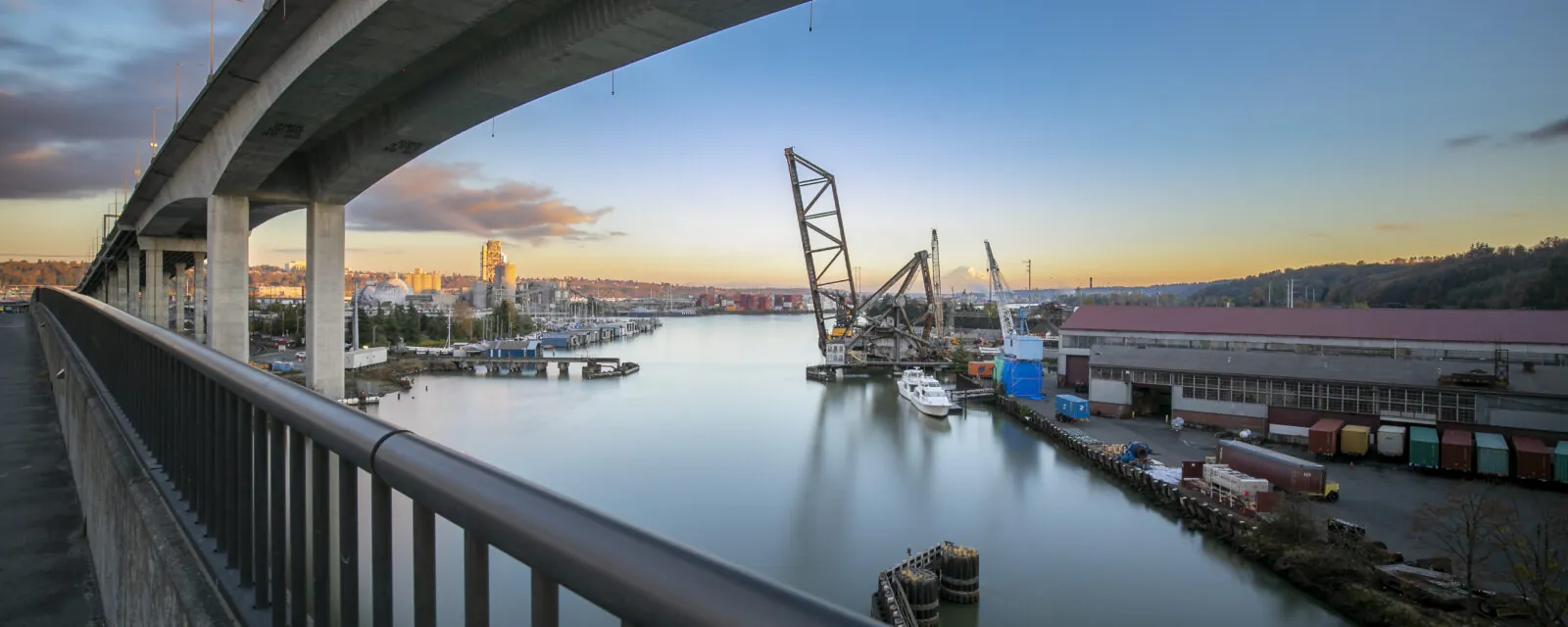
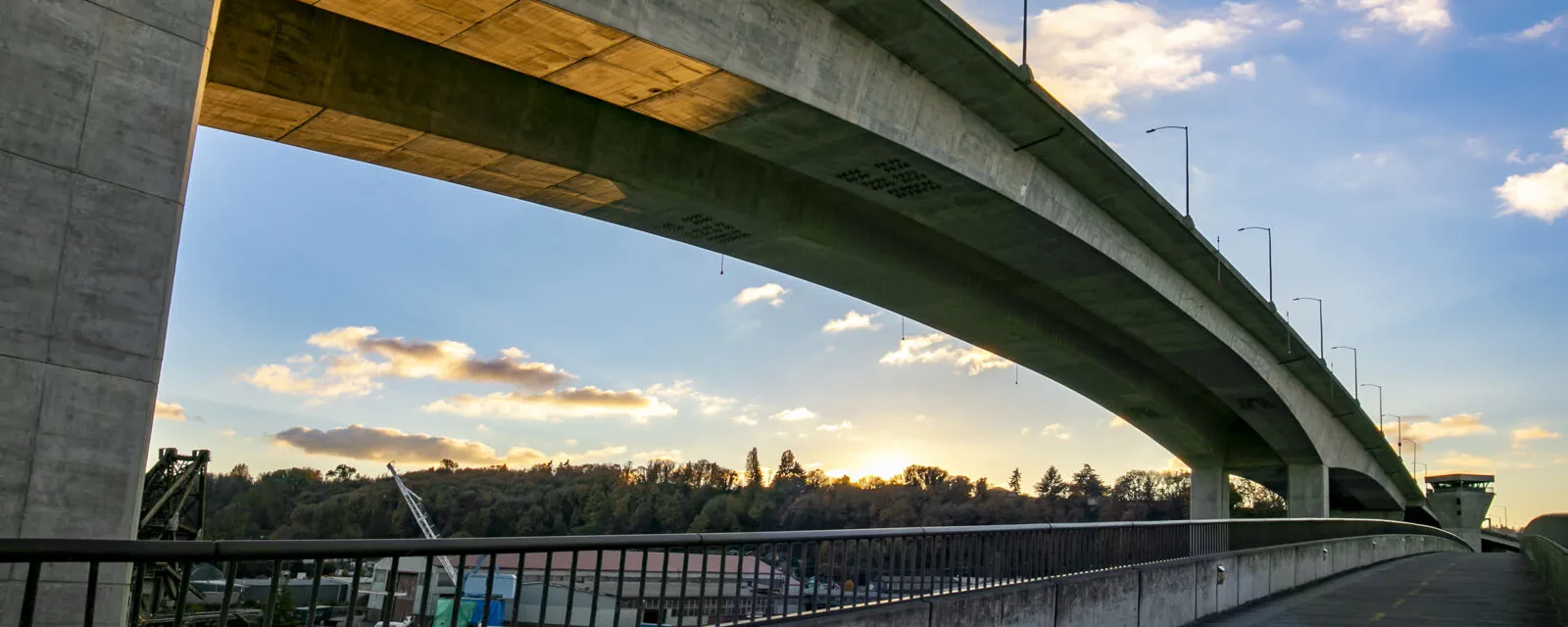
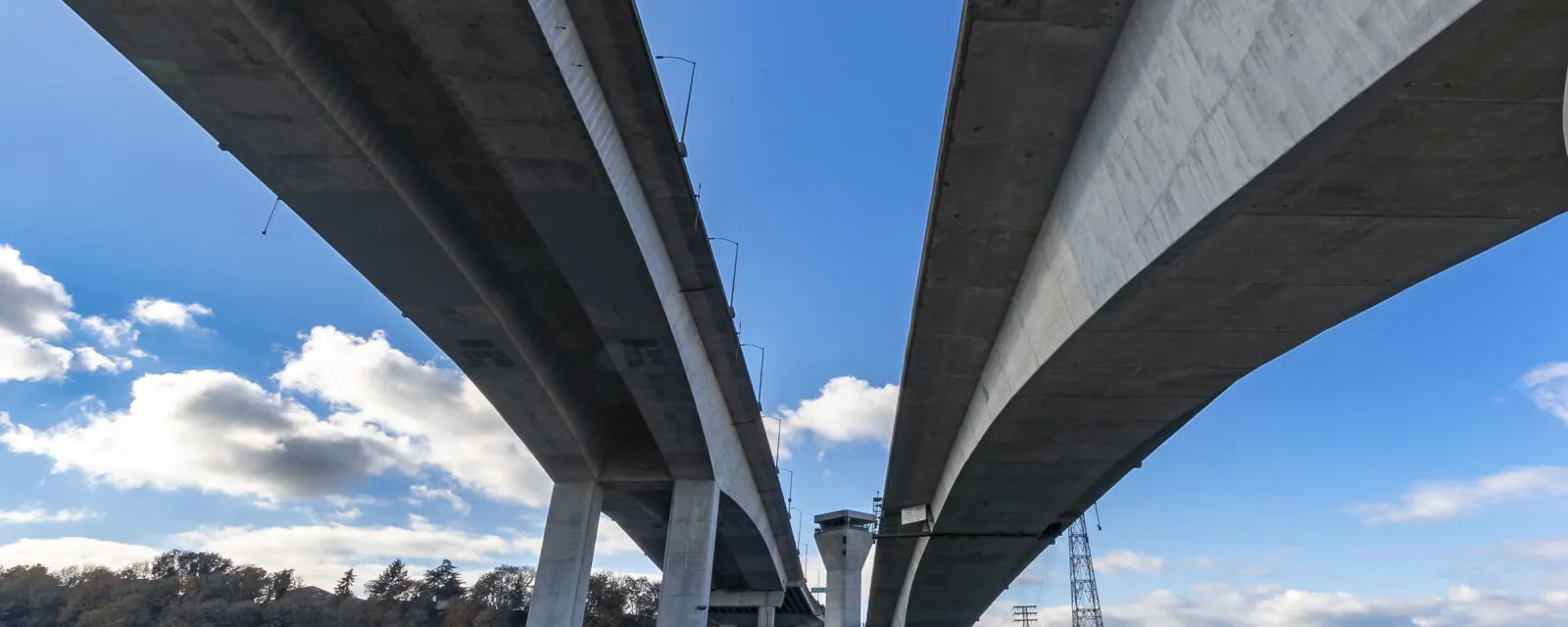
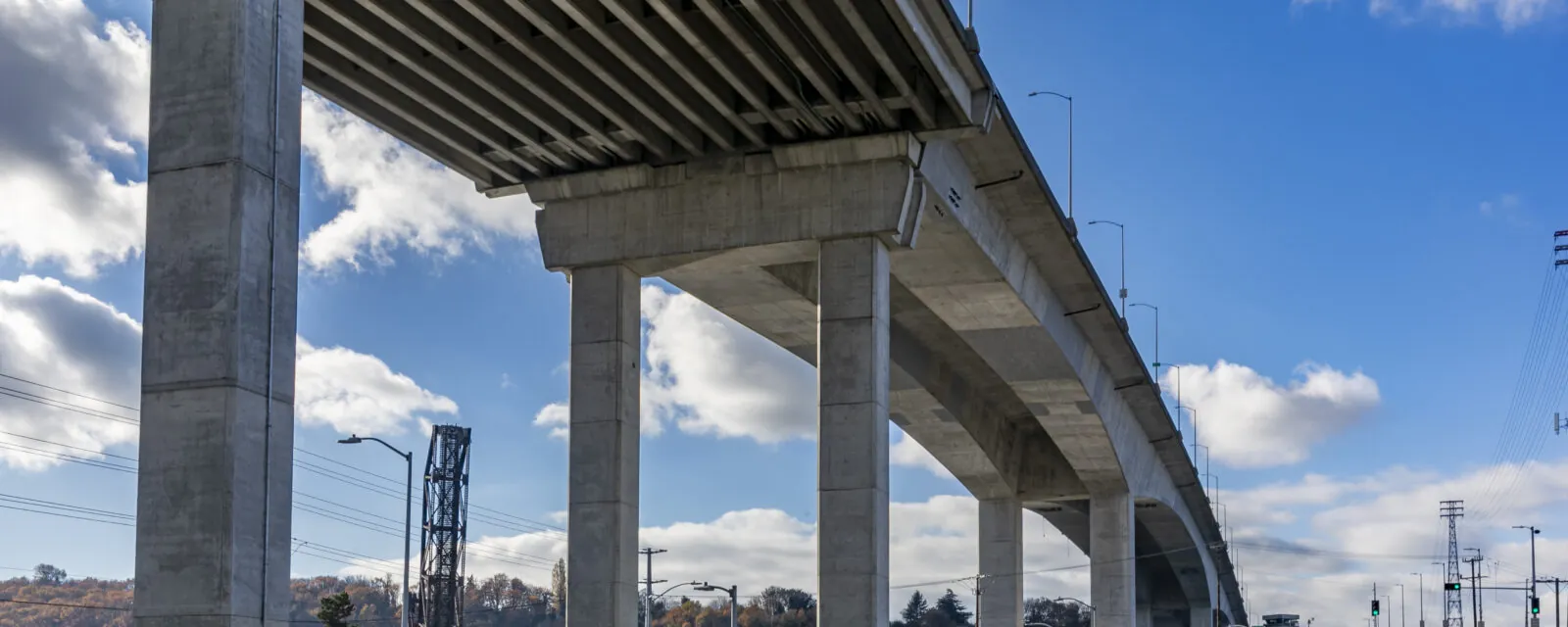
West Seattle Bridge Rehabilitation
Project Details
Client / Owner
Seattle Department of Transportation
Focus Areas & Services
Size
Overall: 1,340 feet (3 spans)
Square footage (deck area): 144,720 (segmental portion, both boxes)
Delivery Method
CM/GC
Vital Seattle bridge re-opened on an expedited schedule through focused teamwork.
The West Seattle Bridge, a critical connection for over 100,000 daily users in Seattle, Washington, and the nation’s freight corridor reopened to traffic in September 2022 following a two-and-a-half-year closure that began in March 2020. The immediate closure resulted from a requested assessment, where severe cracking was found in the three main spans of the iconic post-tensioned concrete segmental structure. The owner conducted an initial phase of emergency repair using post-tensioning to stabilize the structure and prevent collapse. The bridge remained closed while the owner evaluated options to both replace and repair the structure. The rehabilitation option made possible by post-tensioning technology offered significant cost-savings compared to a full replacement, could be completed in one-fifth of the time, and is projected to extend the bridge’s life by 40 years, making it the preferred solution. With the impacts of the closure extending to the local community with increased commute times and reduced access to neighborhood businesses, time was of the essence.
For the next nine-month rehabilitation phase, RS&H assembled a team of experts to serve as the construction management consultant for the Seattle Department of Transportation (SDOT) and oversee the permanent repairs and strengthening that ultimately reopened the vital bridge to the public.
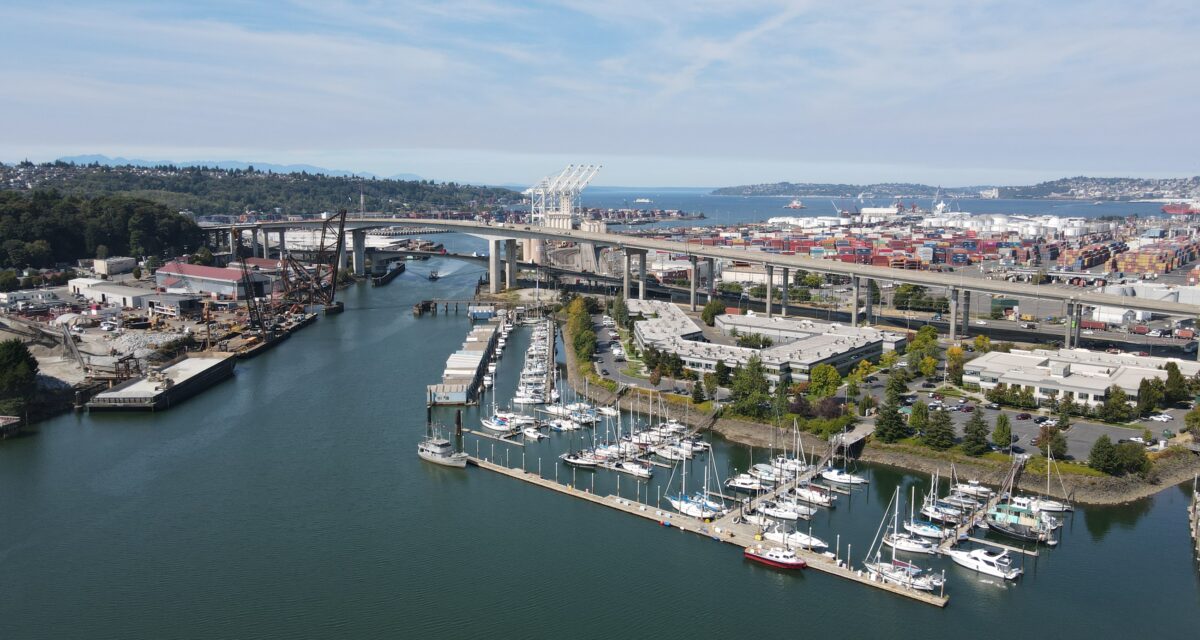
GC/CM fosters partnership, innovation, & cost savings
This project serves as a testament to the general contractor/construction manager (GC/CM) delivery method as it fostered the required innovation and collaboration among the contractor (Kraemer), designer (WSP), client (SDOT), and construction manager (RS&H) to successfully deliver a project with this magnitude of complexity and time sensitivity. This extremely fast-paced rehabilitation encompassed 60 miles of new post-tensioning, 100,000 square feet of carbon fiber wrapping (CFRP), and 240 gallons of epoxy injection to repair the aging concrete bridge, with the post-tensioning and strategic placement of carbon fiber working in tandem to strengthen the bridge. The project team provided an unmatched level of commitment, expertise, and experience crucial to the execution of this unique project in a condensed nine-month timeline. The entire team worked tirelessly to deliver this unique project and restore a vital transportation network to the city.
Creating solutions in real-time while installing a new supplemental post-tensioning system
The new post-tensioning system also included the installation of the concrete infrastructure required to support and anchor the new tendons. To navigate the existing post-tensioning system within the 1980s-era bridge, complex locating of existing reinforcement was performed prior to coring each structural element. Field staff collaborated with design engineers to adjust each tendon’s path and stressing force to achieve the required strength while maintaining the bridge’s structural integrity. The team solved many tendon placement roadblocks while staying on schedule. This complex process of tendon stressing required constant communication and recalculation amongst the on-site team.
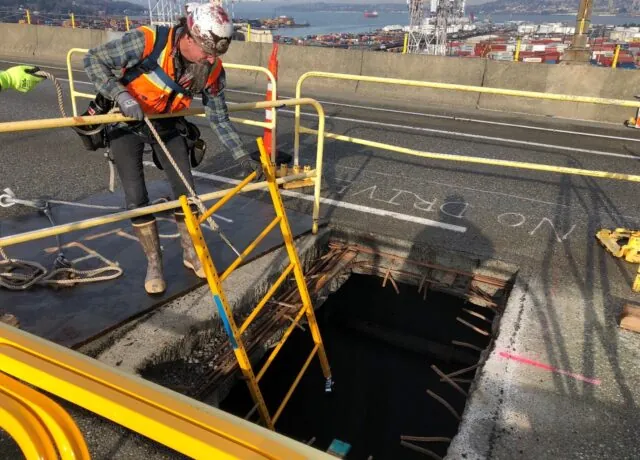
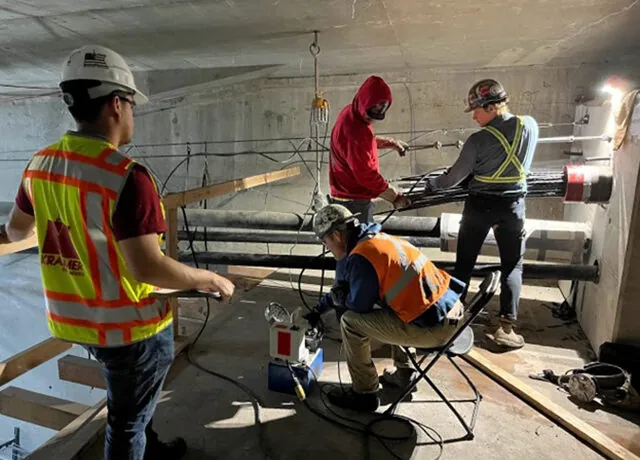
Overcoming access restrictions
With a 10,000 gross vehicle weight limit, no large equipment was allowed on the bridge. Four access openings (four feet by six feet) through the top slab were the only way to get workers, materials, and equipment in or out of the segmental structure, creating an arduous, labor-intensive process. The team worked together to create a plan. All rebar and post-tensioning duct, 1000s of feet, was lowered through the opening and assembled inside the box rather than flying in a rebar cage. Scaffolding needed to access the top of the box, 15 feet above the floor, was carried in piece-by-piece and constructed inside. Multi-strand post-tensioning jacks were too large and heavy to be lowered through the opening and could not be supported inside the box without a crane or similar equipment, so a mono-strand jack was utilized to stress each of the 260 individual strands. While the mono-strand stressing was successful, it required constant monitoring and restressing to achieve the desired force.
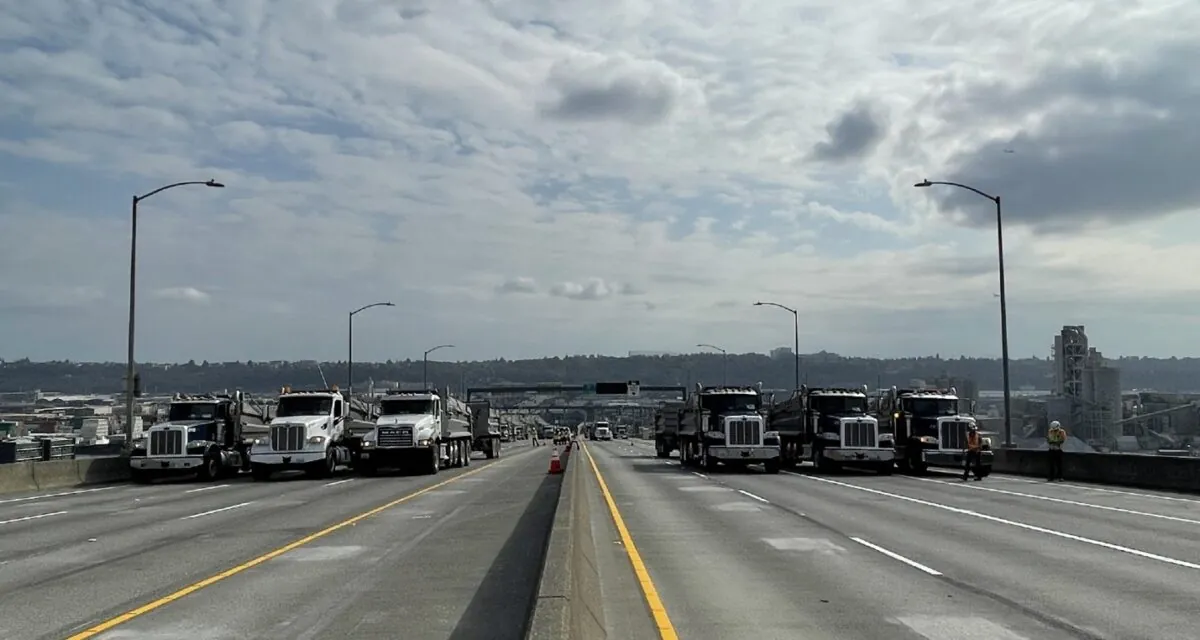
Reconnecting communities & restoring economic vitality
Upon completion of the repairs, the final step was a physical load rating. As the parade of elephants led across the Brooklyn Bridge to reassure the public of its safety in 1884, 12 fully loaded dump trucks (elephants were not available) were positioned across the high bridge to test the structure and confirm the repairs’ efficacy before opening.
The reopening of the bridge not only reconnected the West Seattle Community by eliminating the two-hour detour for residents but also restored the global supply chain through the Port of Seattle, which was significantly debilitated by the limited access for 18-wheelers across the Duwamish during the closure. Port of Seattle served as a major stakeholder in the effort contributing millions to the project budget with an interest in re-connecting their logistical pipeline and the modernization of their Terminal 5 Facility, a $500 million project constructed concurrently with the West Seattle Bridge repair.


